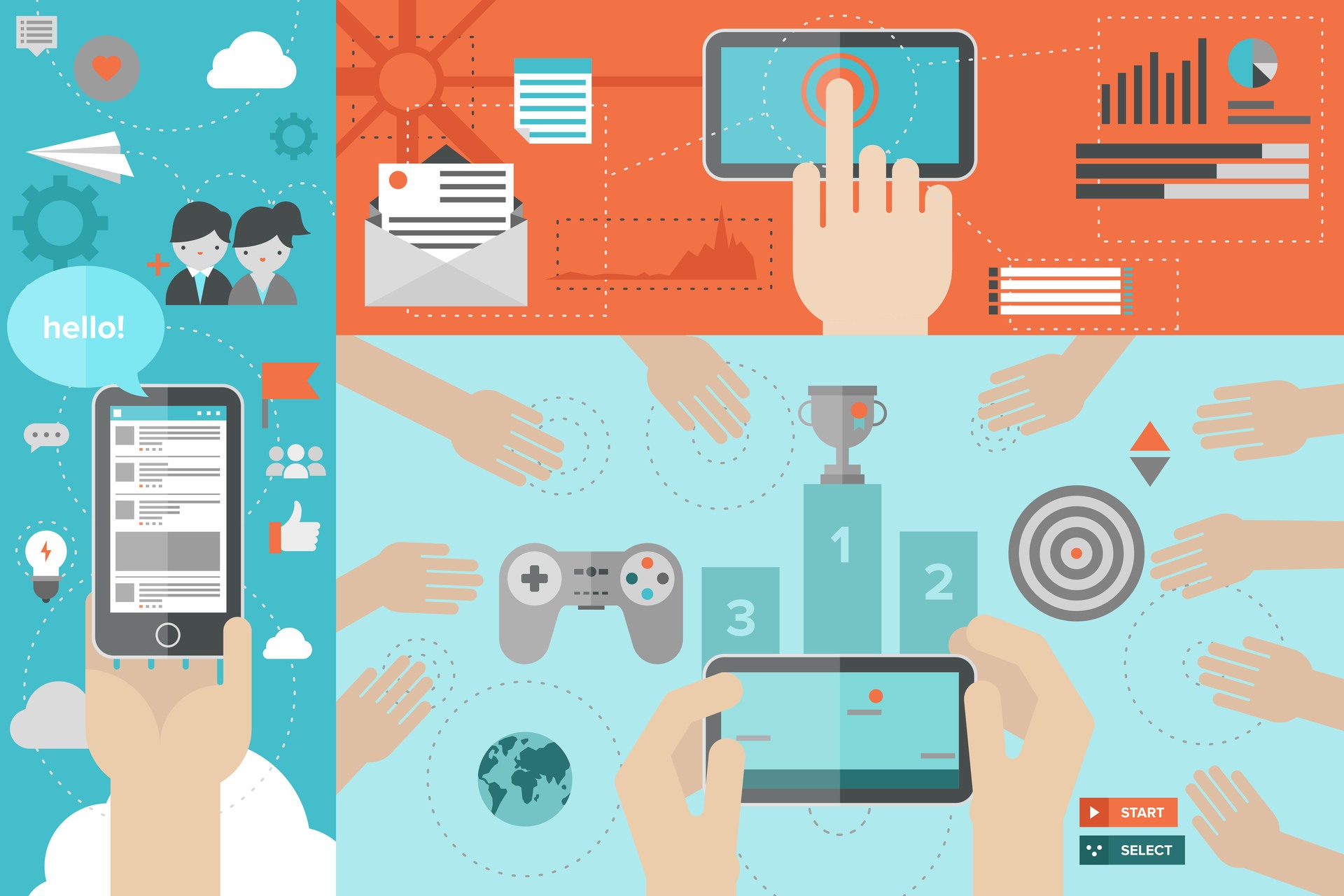Innovative Companies That Gamified eLearning
Learning is part of being human, which means it’s also part of being an employee and a student. So it’s no small wonder that the confluence of computers and instructional methods has created a $56.2 billion industry that we now call eLearning.
Schools and universities use it to enhance higher education. Companies use it to train more efficiently. One study showed that corporations can save up to 70 percent by using eLearning instead of traditional methods.
But there’s a disconnect between the enthusiasm for eLearning and measurable results on the user side. Just because training takes place on a device instead of a dry erase board doesn’t mean the learner will better absorb the material. Research firm Gartner reports that 70 percent of “business transformation efforts” will be crippled from lack of engagement. Regardless of your enthusiasm for introducing an eLearning program, your material won’t be impervious boredom just because it’s digital.
One solution lies in the growing field of gamification. Like its eLearning cousin, gamification is growing into a market behemoth. M2 Research predicts gamification will be worth $2.8 billion by next year. Now, many companies and institutions are merging gamification with eLearning in an effort to improve the way their students and employees learn.
The Compelling Reasons
For one thing, gamification is scientific. The challenge and achievement sequence so essential to games has been proven to release dopamine, testosterone, and endorphins, and even make areas of your brain grow.
In addition, gamification’s focus on short-term, achievable goals with clear rewards is a perfect framework for learning new material. Here are a few of the benefits gamification advocates cite:
- Makes the learning process more attractive
- Encourages active participation and engagement
- Allows for more direct, immediate feedback
- Fosters communal learning through competition and collaboration.
On paper, the theory of gamified eLearning looks great, but many organizations have no idea how to actually implement a functioning system.
So what are the best ways to make online learning more “game-like?” Glad you asked. Let’s take a look at some case studies.
Enterprise Learning Companies That Gamified eLearning
Deloitte
Deloitte has been the veritable poster-child of gamification since its Deloitte Leadership Academy (DLA) went live several years ago. Essentially, DLA is an online training program for employees and customers. Visitors to the site have access to training videos, content, and self-assessments. They are guided through these materials by a series of missions, earning badges along the way and ranking on a leaderboard. Each learner has their own social media-style home page where they can update their status and read a newsfeed of events about users they follow. Some badges are obvious and announced; others are secret “snowflake” badges that only appear when triggered by unique events.
Deloitte last reported a 37 percent increase (per week) in returning site visitors and a total of 20,000 users since its debut.
Exact Target
ExactTarget is a marketing software company that has experienced some large-scale successes since they were bought out in July 2013 by Salesforce. They now have contracts with over 6,000 companies including big names like Coca-Cola, Nike, and Gap. When their MobileConnect product came out, their Director of Product Enablement Scott Thomas was looking for an expedient training solution.
He found The Knowledge Guru—a customizable, online game platform that teaches users about desired subjects through an interactive narrative. The narrative requires players to answer questions and challenges in order to ascend a mountain and deliver a “scroll of wisdom” to the Guru. Each mountain represents a broader subject area with its own learning objectives. The Mountain Guru uses public leaderboards and back-end analytics to help administrators track progress.
Thomas reported that people at ExactTarget actually wanted to play the game, and the MobileConnect launch was their fastest in two years. “I can’t tell you how many people are coming to me wanting another game solution,” he said.
Educational Learning Companies That Gamified eLearning
Brainscape
Brainscape is a virtual flashcard program that uses a customized game approach to help users learn and retain just about any information. Their learning philosophy centers on “confidence-based repetition,” which targets low-confidence areas the most, instead of making learners relearn what they already know.
Students and teachers collaborate to create their own custom sets of “smart flashcards, which break large concepts into more digestible granular components. Students can then work through the cards at their own pace, track progress and mastery in real time, and share and compare card sets with friends.
Brainscape boasts almost 7 million users and says their platform helps students master new information up to five times faster than traditional methods.
Class Dojo
ClassDojo is a cloud-based classroom management tool that helps teachers incentivize good behavior through gamification. Students design their own monster-esque (but cute monster) avatars that are publicly displayed in the system. Teachers can then assign points and rewards to students’ avatars to encourage good behavior, participation, and meeting learning objectives, as well as report disruptive behavior. Some common awards/badges include:
- Helping others
- On Task
- Participating
- Persistence
- Teamwork
- Working hard
All of these badges can be customized for specific activities, and parents have full visibility into their child’s profile in the form of downloadable reports -- which of course provide a little extra incentive for being a good student.
In an era when over a million students drop out of high school every year and workplaces suffer from contagious, chronic disengagement, getting people to invest in their own learning is of paramount importance.
These examples represent only a small handful of the countless ways businesses and institutions can combine the power of modern IT with time-tested game science to enhance their teaching strategies. Yes, gamification can make learning fun, but it’s bigger than that. With the right support and strategy, it can make learning important.








